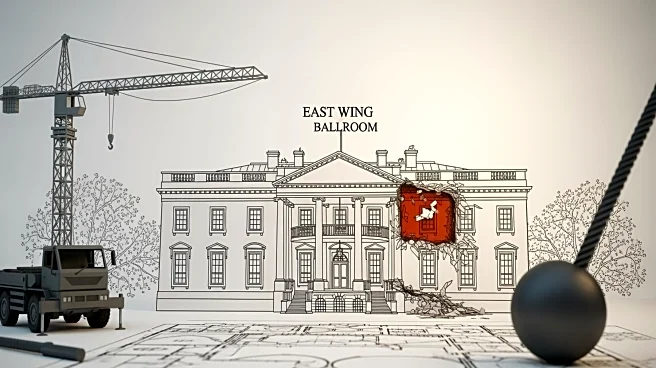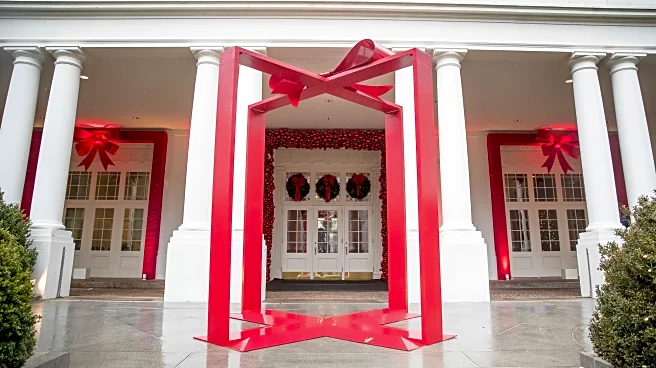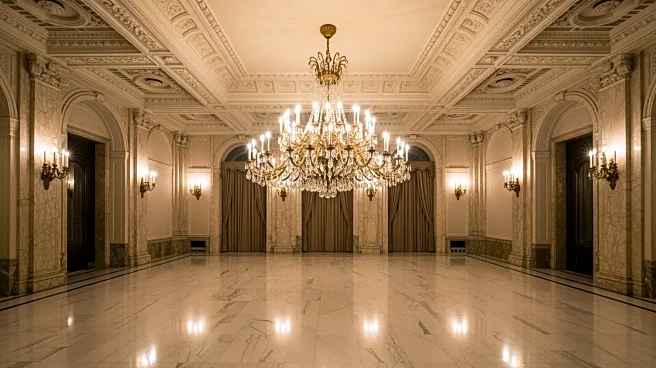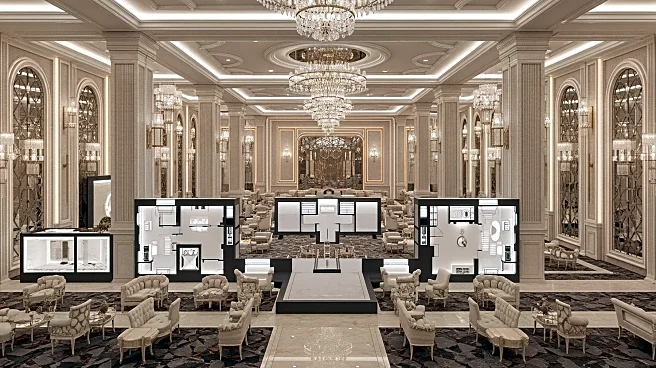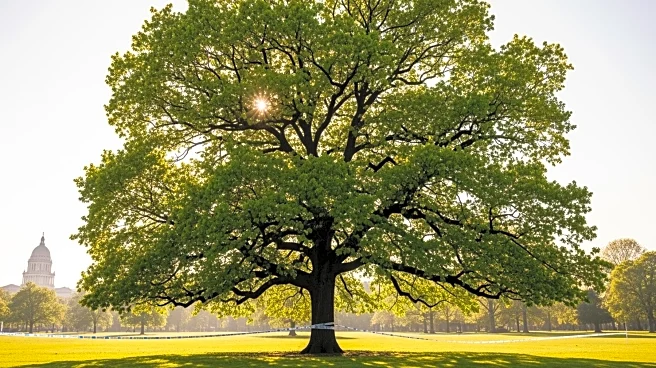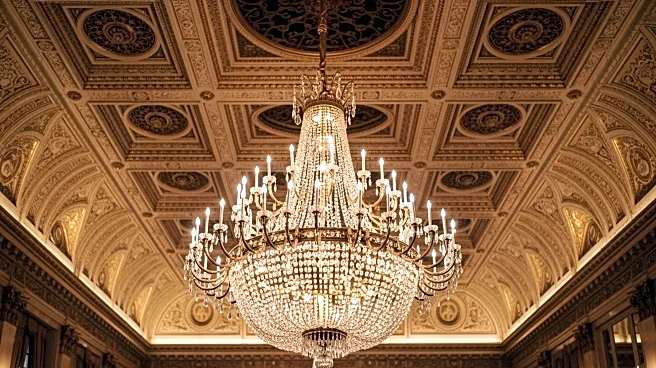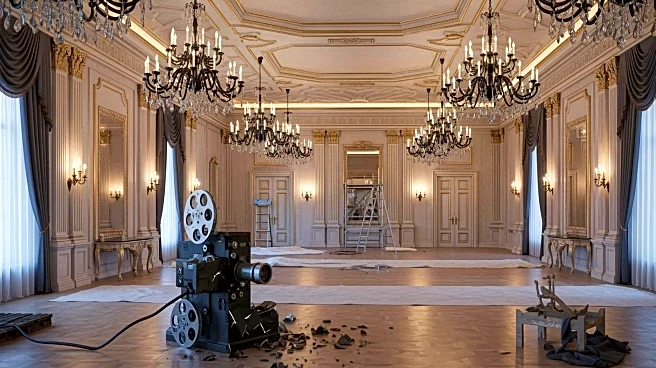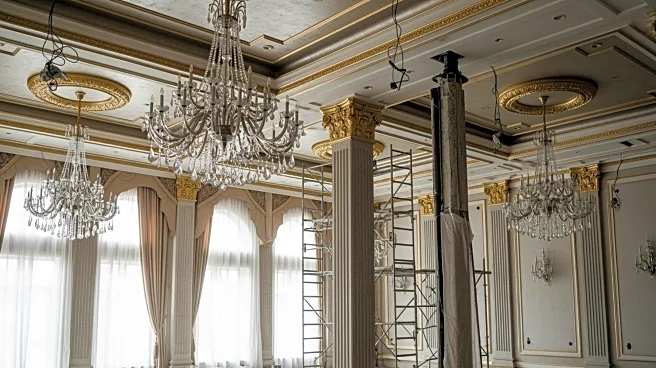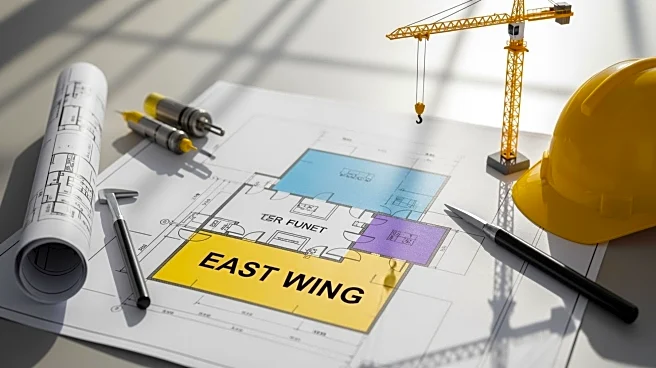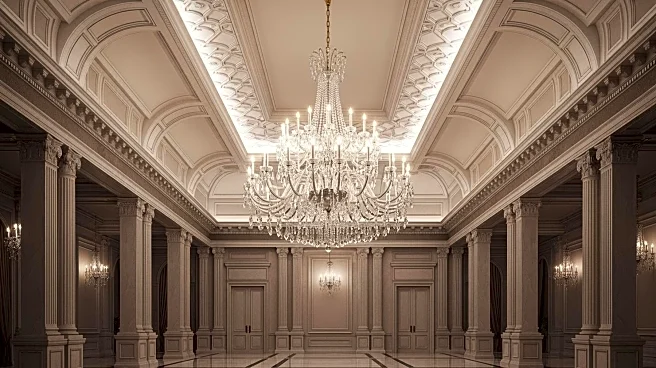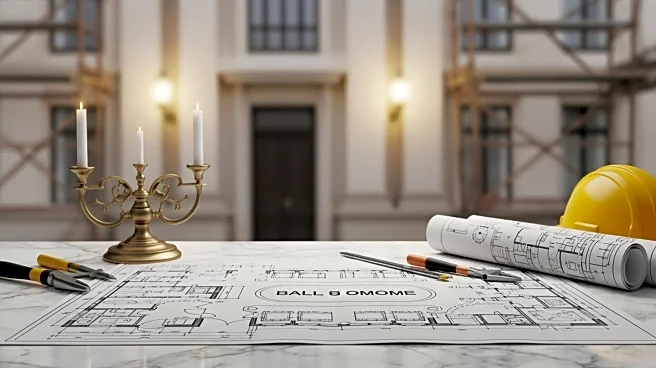What's Happening?
The East Wing of the White House has been demolished as part of President Trump's plan to build a new $300 million ballroom. The East Wing, traditionally the power center for first ladies, housed offices
and reception rooms, including an in-house movie theater and a garden dedicated to Jacqueline Kennedy. The demolition marks the end of a historical era, with President Trump aiming to create a 'great legacy project' by adding a ballroom to the White House. The decision has sparked mixed reactions, with some supporting the addition and others lamenting the loss of the East Wing's historical significance.
Why It's Important?
The demolition of the East Wing represents a significant shift in the White House's architectural and cultural landscape. The construction of a new ballroom is intended to enhance the venue for state events, potentially reducing the need for temporary structures like tents. The project reflects President Trump's focus on leaving a legacy through architectural contributions to the White House. The loss of the East Wing's historical elements raises concerns about preserving the cultural heritage associated with the building.
What's Next?
The construction of the new ballroom is expected to proceed, with ongoing updates provided by the White House. The administration will continue to manage the preservation of historical elements and address any public concerns regarding the changes. The completion of the ballroom will likely influence future state events and the overall functionality of the White House as a venue for official gatherings.
Beyond the Headlines
The decision to demolish the East Wing and construct a new ballroom raises questions about the balance between modernization and preservation of historical sites. The project may set a precedent for future renovations at the White House, highlighting the importance of maintaining cultural heritage while adapting to contemporary needs.
